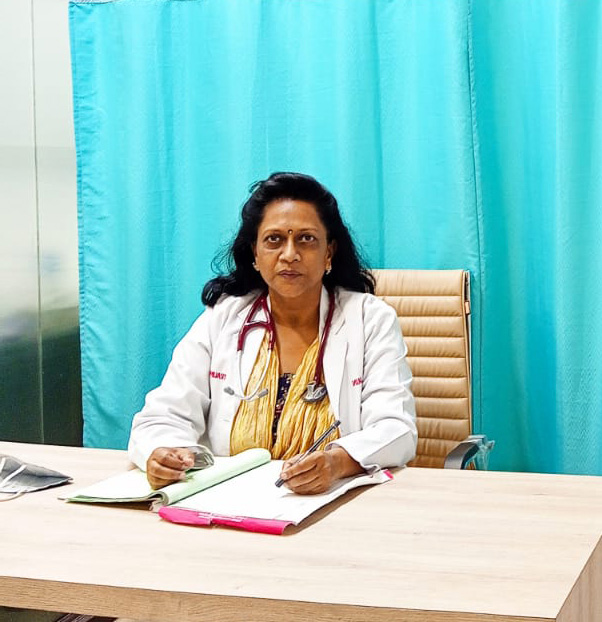Explains Dr Amita Jain, India’s Top Laparoscopy Surgeon for Gallstones
Gallbladder stones, also known as gallstones, are solid deposits of cholesterol or bilirubin that collect at the bottom of the gallbladder, a small pear-shaped organ located beneath the liver. These stones can vary in size and composition, ranging from tiny sand-like particles to larger, golf ball-sized formations. Cholelithiasis is the condition of gallstones.
While the exact cause of gallbladder stones is not fully understood, several factors are believed to contribute to their development. In this article, Dr Amita Jain, Delhi’s leading laparoscopic surgeon for gallbladder stones will explain what causes gallbladder stones.
Gallstones are prevalent in industrialized nations, impacting approximately 10% of the adult population and 20% of individuals aged 65 and above. Merely 20% of individuals identified with gallstones will require medical intervention.
The underlying reason for the formation of gallstones is believed to stem from an irregularity in the chemical composition of bile within the gallbladder. Although the precise mechanisms leading to this imbalance remain uncertain, several potential factors have been identified.
1. Cholesterol Imbalance:
One of the primary causes of gallbladder stones is an imbalance in the composition of bile, a fluid produced by the liver to aid in digestion. When there is an excessive amount of cholesterol in the bile, it can crystallize and form stones. High cholesterol levels in the body, poor diet, and obesity are common risk factors associated with this cholesterol imbalance.
These stones are called Cholesterol gallstones. They comprise 80% of all gallstones, appear yellow-green and may not be detected on CT scans but can be seen on an abdominal sonogram despite having no correlation with blood cholesterol levels.
2. Bilirubin Imbalance:
Another type of gallbladder stone, known as pigment stone, is formed when there is an excess of bilirubin in the bile. Bilirubin is a yellowish pigment that is a by-product of the breakdown of red blood cells.
Conditions such as liver cirrhosis, certain blood disorders, and infections in the bile ducts can lead to an accumulation of bilirubin and subsequent stone formation.
3. Gallbladder Stasis:
When fats are present for digestion, the small intestine communicates with the gallbladder, triggering the release of bile. A healthy gallbladder contracts effectively to expel bile as needed. However, inadequate contraction can lead to residual bile, which gradually concentrates, forming sludge at the gallbladder’s base that eventually crystallizes into gallstones.
Issues with gallbladder contraction and emptying can arise due to factors like diabetes, specific drugs, and hormonal irregularities, increasing the chances of stone formation.
4. Hereditary Connection:
The hereditary nature of gallstones remains uncertain, as multiple factors contribute to their formation. Studies reveal that there are some genes that are associated with gallstone formation. Further investigation is required to gain a deeper understanding, but it is possible for gallstones to be inherited across successive generations.
5. Rapid Weight Loss:
Significant and rapid weight loss, particularly through crash diets or bariatric surgery, can trigger the formation of gallstones. When the body metabolizes fat rapidly, it causes the liver to release more cholesterol into the bile, increasing the risk of stone formation. It is crucial to adopt a gradual and healthy approach to weight loss to minimize the risk of gallbladder stone formation.
6. Age and Gender:
Gallbladder stones are more prevalent in certain demographics. Women, especially those over the age of 40, are at a higher risk of developing gallstones than men. Hormonal factors, including estrogen, contribute to this gender disparity.
Additionally, advancing age increases the likelihood of gallstone formation, as the gallbladder’s functioning may decline over time. Now that you are aware of the reasons, take care of your diet, exercise daily, maintain a healthy weight and consult a doctor in case of emergency. Always remember that prevention is better than cure.

Dr Amita Jain is a surgeon with the highest degree of professional competence, precision and surgical craftsmanship. Performed all complicated general surgery procedures with in depth knowledge of invasive and few minimal invasive and onco surgical techniques. Underwent special training in trauma, executed various trauma-related complex life-saving neurosurgical procedures, reconstructed injured mangled limbs and performed vascular and reconstructive procedures with critical care.
Dr Amita Jain holds 28 plus years of rich experience in Trauma and General Laparoscopic Surgeries (including Gallbladder stone removal, appendix removal, hernia repair surgery, piles and fissure surgeries). She was the Professor Surgery of at the Army College of Medical Sciences and Base Hospital Delhi Cantt. In 1994 she was commissioned as Surgeon under the United Nations Mission in Congo. From 2020 to 2022, she worked with Bansals Hospital. Currently, Dr Amita Jain is the Senior Consultant, (Speciality: General and Laparoscopic Surgeon) at Artemis Lite Hospital, New Delhi and Sr. General and Laparoscopic Surgeon at Rainbow Children Hospitals, Malviya Nagar, Delhi.

